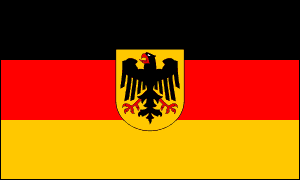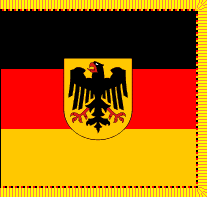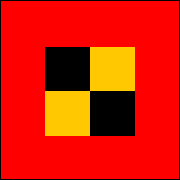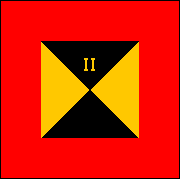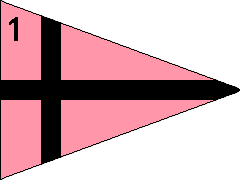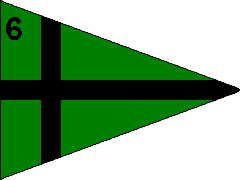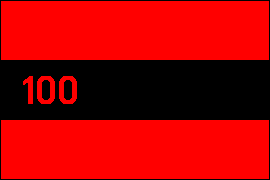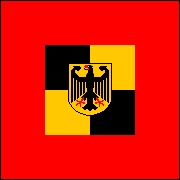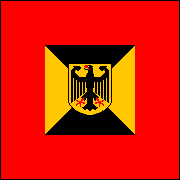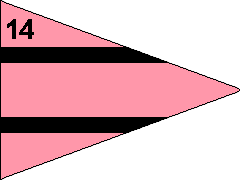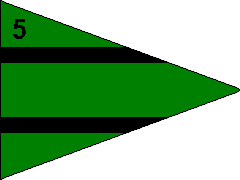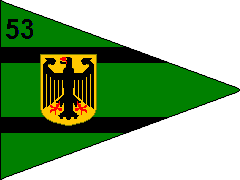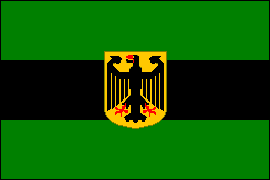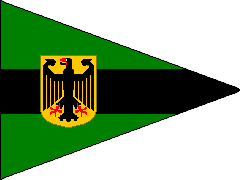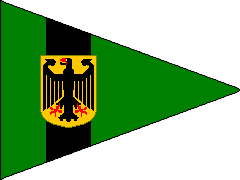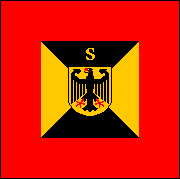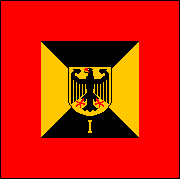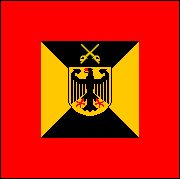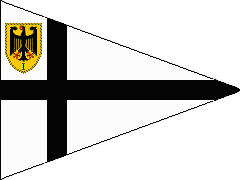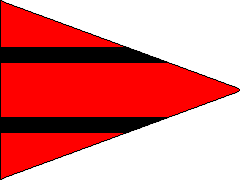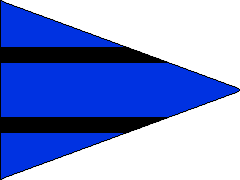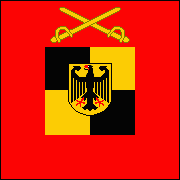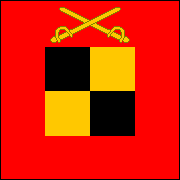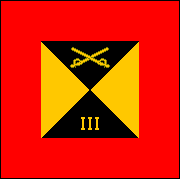|
FEDERAL
REPUBLIC OF GERMANY |
|
|
| FLAGS OF
THE ARMY • 1956-2004 |
The state flag (Bundesdeinstflagge) of the Federal Republic of Germany—the black-red-gold tricolor with the national coat of arms added—became the military service flag on July 1, 1956, when the Bundeswehr, as the armed forces were collectively known, was officially established. A square version of this flag, with black-red-gold piping and a gold fringe, was adopted as the ceremonial color (Truppenfahne) of the Bundeswehr. The color itself was identical for all branches of the armed forces; for color-bearing units of the Army (Bundesheer) a red streamer inscribed with the unit name or designation was attached to the staff. Command flags were similar to those used by the German Army during World War II, but incorporating the black-red-gold national colors. The first command flags, adopted in 1957, were for the Chief of the Army Command (Befehlshaber Heeresführungskommando), corps commanders (Befehlshaber einer Korps) and division, regimental, battalion and company commanders. The corps command flag displayed the corps designation in Roman numerals in the upper quadrant. Division and regimental command flags/pennants had a field in the arm-of-service color (Waffenfarbe) and displayed the unit's numerical designation. Battalion and company pennants had no designations. (See here for battalion and company command pennants.) In 1959, two additional command flags were adopted: one for the Inspector (chief of staff) of the Army (Inspekteur des Heeres) and one for chiefs of Territorial Defense Commands (Befehlshaber Territorialkommando) and chiefs of Military Districts (Befehlshaber im Wehrbereichskommando). Both displayed the national coat of arms. Two years later, in 1961, the reorganization of the divisions resulted in the introduction of command flags for brigades. These were triangular with a field in the arm-of-service color, two black horizontal stripes, and the unit designation in the upper hoist. At the same time, command flags/pennants for units of the Territorial Army (Territorialheer) were established. These were similar to command flags for the active Army, but had a dark green field regardless of arm of service and displayed the national coat of arms. Territorial Army units were manned by reservists and equipped with second-line equipment. They were allotted to the three Territorial Commands and the Military Districts. From this time forward, the brigade was the lowest echelon of command whose flag bore a unit designation. In 1973 the command flags for chiefs of Military Districts and Territorial Defense Commands were revised to include a designation in the lower quadrant for the former and in the upper quadrant for the latter. An additional command flag was introduced at this time for the Chief of Army Administration (Amtschef Heeresamt). Finally, in 1995 the command flags of the Inspector of the Army, the Chief of the Army Command and the Corps Commanders were altered by the addition of crossed swords—the basic insignia of the Army. These flags remained in use until the reorganization of the armed forces in 2004. The brigade, regiment and battalion command flags/pennants were also specified for certain equivalent commands; for example, the chief of a corps supply command had a brigade-echelon pennant with a field of cornflower blue, the arm-of-service color for technical troops. For the commander of corps troops, the pennant was white with a black cross and the national coat of arms in the upper hoist. Organization of the Cold War-Era Bundesheer: By the mid-1980s the order of battle of the Bundesheer comprised three corps controlling twelve divisions: six armored, four mechanized infantry, one mountain infantry and one airborne. There were also numerous separate brigades, regiments, battalions and companies of various types. In the event of mobilization, the three Territorial Defense Commands would each assume a corps designation and the six Military District Commands would each assume a divisional designation. The combat brigades and regiments of the Territorial Army would fall under the command of these additional corps and division headquarters. Fully mobilized, the strength of the Bundesheer was about 1,065,000 active and reserve troops. |
|
|
